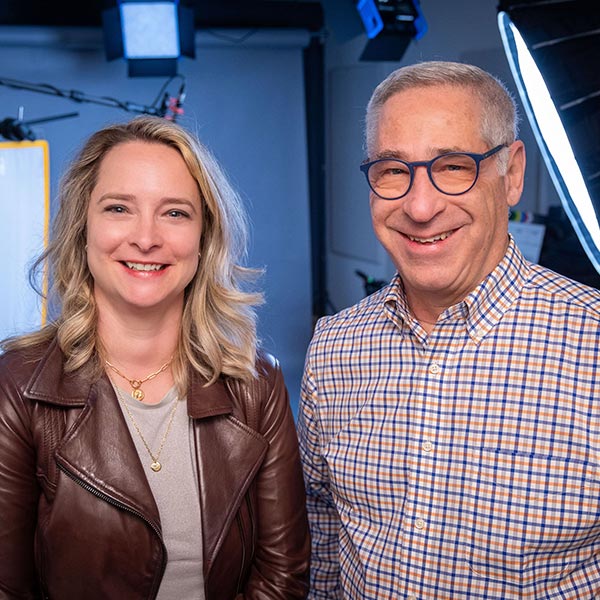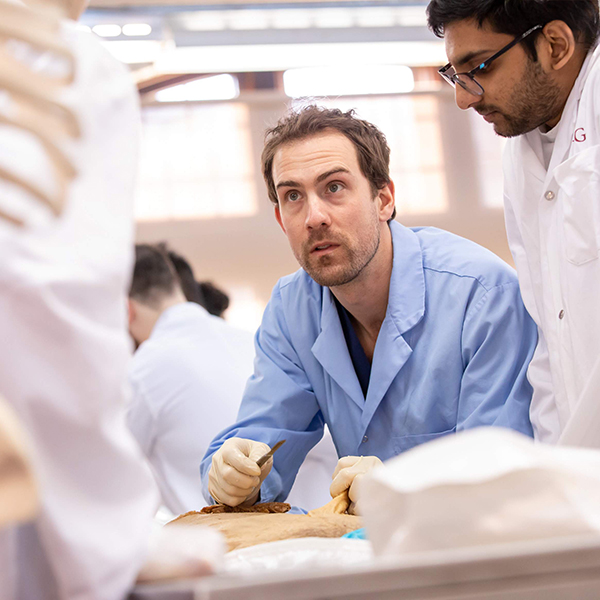Eating well and good health are inextricably intertwined. And not eating well can have some serious consequences. For instance, in 2018 a team of researchers from the University of Alberta estimated that the costs associated with not following the Canadian government’s food recommendations amounted to $15.8 billion.
The researchers at McGill’s Clinical Nutrition Research Unit (CNRU) are committed to probing the science linked to nutrition in all its complexity.
Last summer, the CNRU, a key part of the School of Human Nutrition at Macdonald Campus, set up shop in a former post office in Sainte-Anne-de-Bellevue. The location isn’t the only thing that’s new. Thanks to funding from the Canadian Foundation for Innovation and other sources, the CNRU has also made significant upgrades to its research infrastructure.
Assistant professor Daiva Nielsen is the scientific director of the CNRU, and she believes that the research it pursues has never been more relevant. For instance, 44 per cent of Canadian adults are managing a chronic disease for which good nutrition is vital.
Researchers now have access to an exercise lab to test the effects of combining diet interventions with exercise interventions, a kitchen, a dining room, classrooms, state-of-the-art lab equipment for testing blood and other bodily samples, and freezers for biobanking tissue.
There is also space for public lectures, school trips for kids, and workshops for healthcare professionals to keep up with the latest findings and technology. “We can do community activity and measure the benefit of increasing food literacy,” says Anne-Sophie Brazeau, an assistant professor of human nutrition and the program director of dietetic education and practice at the School of Human Nutrition.
CNRU researchers explore a range of topics, from aging well (some research indicates that yogurt helps memory, and that dairy assists with verbal fluency) to examining which foods before surgery can speed up recovery times.
Brazeau looks at diet and glucose management for type 1 diabetes (formerly known as juvenile diabetes, half of the cases are diagnosed in adults). Type 1 makes up five to ten percent of the cases of diabetes, affecting about 300,000 individuals in Canada.
Blood glucose fluctuations can be burdensome to manage, and every diabetic responds differently to food and activity. “It’s never one size fits all,” Brazeau tells her students, who must be open to whatever regime their patient wants to try. For instance, low carb or ketogenic diets are often considered risky, but they may be fine for certain individuals. Brazeau’s approach is to see what’s possible, what’s safe or not, and what’s best for each patient.
Brazeau will use exercise equipment and wearable continuous glucose monitors to test glucose fluctuations under different circumstances. Someone can have their glucose measured while they sit down to test meals at the clinic and while they perform physical activities at the clinic, leading to a personally tailored prescription of how much insulin to inject related to the composition of a meal and the amount of activity they’ll take part in.
Nielsen, who has a background in both genomics and behaviour modification, developed an innovative sensometric lab with new neuroscience tools for her work.
“I’m interested in appetite, food preferences, and genetics. There are genetic variants implicated in sensitivity to reward and energy metabolism,” she says. “We can easily collect genetic information from saliva. That’s really valuable [for experiments].”
Nielsen studies how people respond to food. “One of my hypotheses is that a state of being reactive to food cues is actually normal, because evolutionarily it was a survival advantage. The idea that obesity is somebody’s lack of self-control? I don’t believe that,” she says. “That’s how humans are hardwired, and now we’re in an environment where food is abundant and unhealthy food is very affordable. I try to argue for better public policy and for better affordability for healthier foods.”
The CNRU’s sensometric lab has a wearable neuroimaging device (it looks like a tuque with electrodes) that measures changes in superficial brain tissue oxygenation. Though not as deep probing as an fMRI ((functional magnetic resonance imaging), Nielsen says she and other CNRU researchers will be able to monitor people in natural situations, like browsing a buffet or sitting down to a meal – which is hard to do if your research subject is lying in a loud and claustrophobic fMRI tube.
The equipment fits children, too, and Nielsen says she would love to crack the code on toddlers’ picky eating. “I’m a mother to young kids and personally interested in why their appetites are so different!”
Other specialized equipment at the CNRU include eye-tracking devices, such as eyeglasses that also measure pupil size (pupils dilate when you’re paying more attention). Another tool clips onto a computer monitor and registers where people look on a screen, useful for monitoring responses to online grocery shopping or watching commercials. “It’s very precise,” says Nielsen.
The facility is embracing the use of wearable devices in health research, including “smart shirts” that collect data during exercise, rest, and daily activities. The ability to collect diverse real-time and real-life data makes the CNRU unique from other nutrition research labs around the world.
Having access to that kind of equipment is a boon to graduate students, says Nielsen, and not just for the ones who are pursuing research careers. Graduate students who expect to be clinical nutritionists also benefit from learning to use some of these new technologies, which could prove useful for work in hospitals, clinics, care facilities and other settings such as industry.
When asked why nutrition can seem so complicated, Nielsen and Brazeau pause and almost sigh. “Life used to be simpler in some ways,” Nielsen says. Now, “people are always on the go. And making food takes time, effort, and skills.”
“Food preparation is more complex for some than it used to be,” Brazeau adds. “It’s not part of the school curriculum anymore, and parents don’t necessarily teach [these skills] to their children.” Learning good food behaviour early in life may well prevent, or at least delay, health problems, she adds.
Nielsen plans to add more technological tools to the facility, including a body composition scanner to comprehensively measure body mass partitioned into fat, muscle, bone, and water. The wish list also includes equipment for modifying food textures, an understudied area of food preferences.
Another approach she is keen to explore involves the creation of a “food pharmacy” at the CNRU, where people who are managing or at risk for developing a disease can buy healthy foods at a reduced cost, thanks, in part, to industry partnerships. If healthy food can be made more affordable, it would serve as a gentle, but powerful prod for making healthier choices. In practice, it would look like a small grocery store stocked with whole grains, fruits, vegetables, and lean meats, with nutritionists available for consultations.
“Providing food is medicine,” Nielsen says. “We’re trying to show that putting money into prevention is cost effective.”
For more information on the CNRU, or to support its work, visit the CNRU site.


